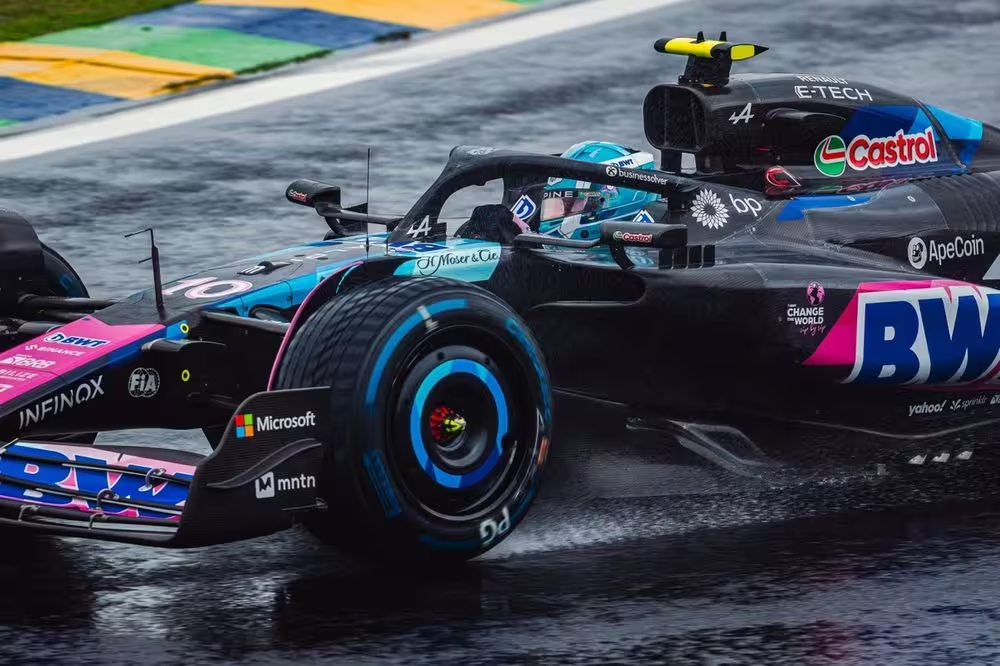The rain-affected Brazilian Grand Prix delivered what was perhaps the biggest shock podium of the Formula 1 season so far.
Max Verstappen‘s charge from 17th on the grid to the front had been anticipated by very few people, and it marked his first triumph since the Spanish Grand Prix back in June.
Right behind the Dutchman were the two Alpine cars of Esteban Ocon and Pierre Gasly, who scored more points for the squad in a single afternoon than they have all season so far.
The joy of the top three was in contrast to the struggles that other teams faced in the wet conditions, with recent benchmark squads McLaren and Ferrari struggling with a lack of pace.
World championship contender Lando Norris was fighting front-locking problems, while Ferrari’s Charles Leclerc described his SF-24 as pretty horrendous to drive.
“We were just not fast enough,” declared the Monegasque after the race. “The car was extremely difficult to drive and very, very pointy, very digital, very oversteery.”
While Verstappen and the two Alpines were certainly given a helping hand to their result by the red flag that handed them a free tyre change, it would be wrong to say that this was a fluke result won by a roll of the dice.
Even after the red flag resumption, the trio were the fastest cars on track, showing that the end result was certainly more down to how the relative cars performed in the wet.
It is a well-known phenomenon that some cars are more suitable for wet conditions than dry, as multiple elements come together to help drivers overcome deficiencies that are exposed in the dry.
Pierre Gasly, Alpine
Photo by: Alpine
One factor that almost certainly helped Alpine was the fact that the wet masked one of its main weaknesses: engine performance. With the tricky conditions more about managing throttle input than simply having the most power, the squad was on a much more level playing field than it is in the dry.
But one other interesting element popped up as a factor that could explain the shuffling of the order in the wet – and that is the aero impact of wet-weather tyres.
The current generation of ground-effect cars are very sensitive to ride height, and just a couple of millimetres of difference in ground clearance can have a pretty big impact in terms of downforce levels, with all the juicy performance coming as close to the track as possible.
So with the diameter of the inter tyre that most teams use being 5mm greater with its tread…
Click Here to Read the Full Original Article at Motorsport.com – Formula 1 – Stories…

